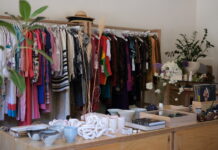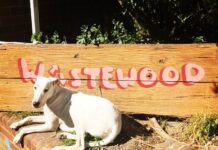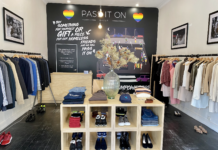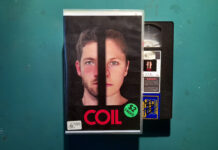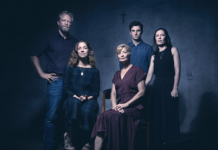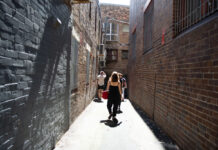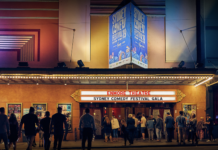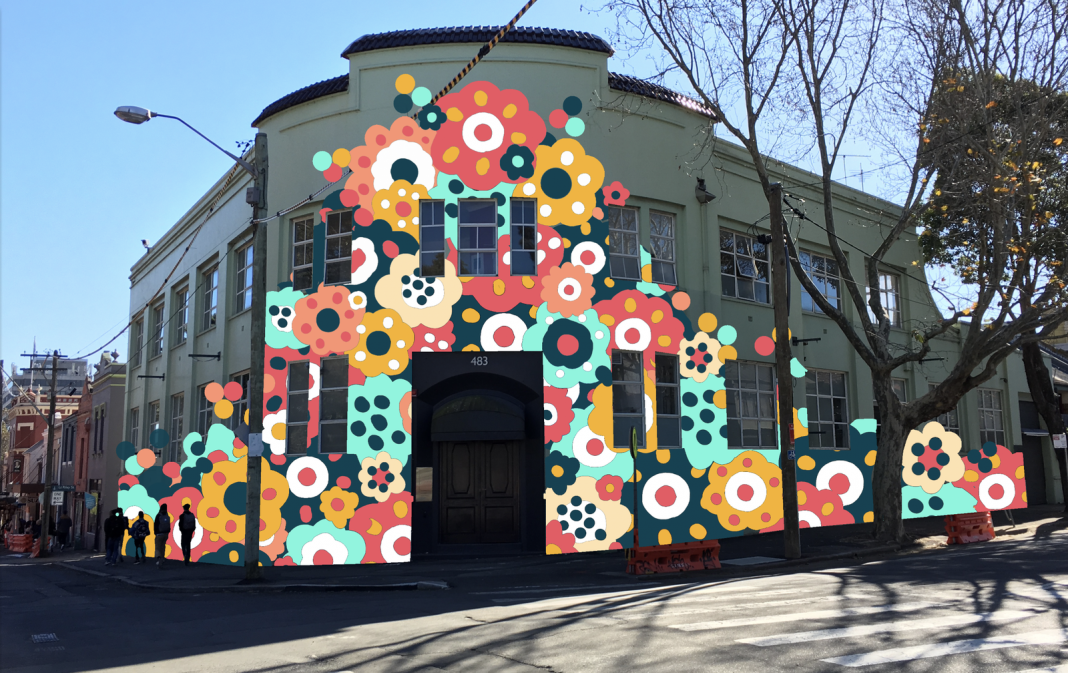Sydney artist Nic Green is transforming the corner of Devonshire and Riley Street with a major street mural as part of this year’s Surry Hills Festival. He talks to Lachlan Colquhoun about his inspiration.
In other eras of history, says Nic Green, governments and architectural patrons created buildings which were a “feast for the eyes.”
“If you think about Byzantine architecture, for example, the streets would have been wonderful with all the colour and decorative architecture,” he says.
“So when I look at Sydney today I sometimes think we’ve gone backwards in many ways. “People can access visuals whenever they want on their phones, so its as if the cities have turned grey as we have turned inwards.”
Green’s Surry Hills Festival work is a bold attempt to redress this trend. The building at 483 Riley Street is set to be transformed by a riot of colour just in time for spring and the Surry Hills Festival.
With walls facing both Devonshire Street and Riley Street, Green’s mural will take the flower power theme of the festival, add some inspiration taken from local textile designer Lola Phillips, give a nod to Surry Hills history as a textile district, and give it his own twist to amaze and delight festival goers and the neighbourhood.
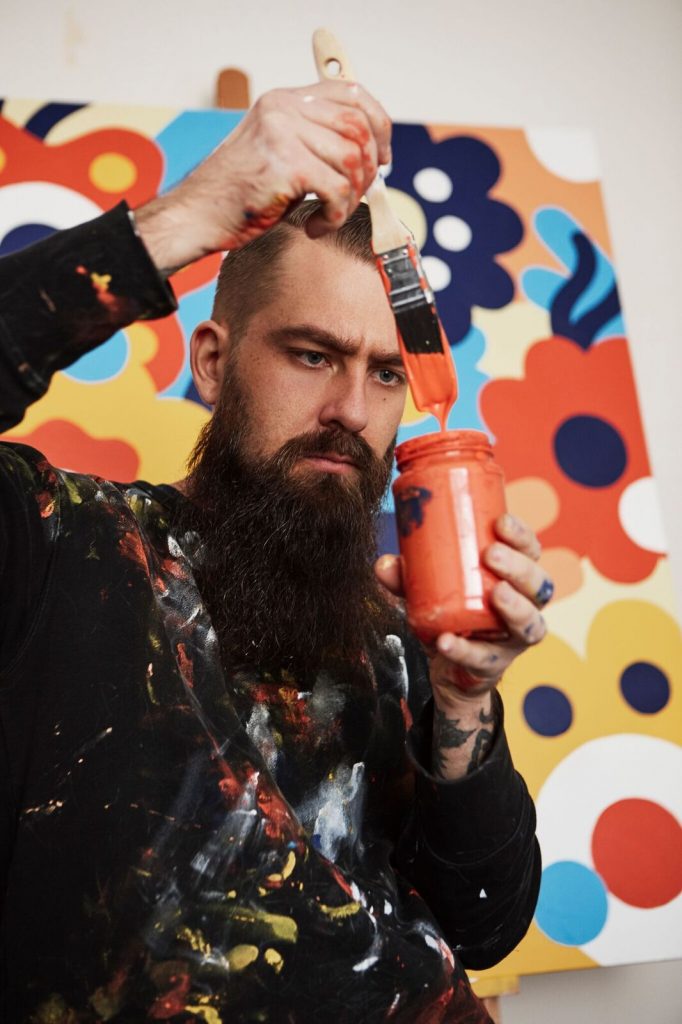
“Colour is so important in a work like this, because I think it is an entry point for people and whether they like it and whether it has an emotional impact,” says Green. “When I’m dealing with public art like this I feel a responsibility to make sure that its as accessible and universal as possible and can be enjoyed by everyone, so I don’t want to be too esoteric on the street because there’s another place for that.
“This work is about being upbeat and trying to keep it positive and influence people’s mood when they are out and about, and I think we need more of that type of artwork.”
Painting the mural will be as much a performance as a work in progress. It is likely to take Green and an assistant up to two weeks to complete the work and significant infrastructure, such as scaffolding and scissor lifts, will be required.
“This building has a huge presence and commands that corner, so the way it will work as art will be an unusual creature,” says Green. “A person who is on the footpath next to it can only interact with a certain piece of it, but if you’re across the road you will be looking at it differently.”
In any of his outdoor works, Green says he seeks to respond the building, the pathways around it and how people navigate their way. He also aims to retain some of the building in what he does.
“I always build a colour scheme based on the original colour scheme of the building,” he says. “So I’m not completely covering the building. I’m integrating my artwork and its as if the building is wearing an adornment rather than plastering the building with new colour.”
This comes back to acknowledging the history of the building and its environment, and in Surry Hills there is plenty of history to inspire.
“You can feel all of that in Surry Hills,” says Green. “Its as if you could place yourself in those streets walking around 100 years ago, so that is definitely an influence.”
Green has painted more than 100 outdoor art works around Sydney and he says perhaps half of them remain. Of those that do, some have been changed by building works, by other artists who have come later, or the degenerative march of time.
“All sorts of things can happen, so I have to have a level of detachment to my work after it is finished,” he says. “I wouldn’t be able to keep making street based artworks if I was too precious about making them.
“A few years ago I painted a really big mural which had lots of preparation go into it because it was a heritage listed building, and then six months later they found a defect under the membrane and had to strip it all back.”
But while the artwork is there, Green hopes it can make a difference to the area and to people’s mood. “Think how many walls you walk past in any day,” he says.
“How many of them do you recognise or consciously pay any attention to?
“The power of this type of art comes from its place, and my hope is that this work will really mark out the space and make people aware and responsive.”
*Feature image is an artist’s impression of the Devonshire and Riley Street mural.
The mural is a project of the Surry Hills Creative Precinct, with support and funding from Transport NSW in collaboration with the Surry Hills Neighbourhood Centre.

